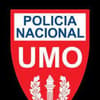Podcast
Questions and Answers
What are some signs of exposure to sulfur mustard?
What are some signs of exposure to sulfur mustard?
- High fever and nausea
- Severe skin irritation and large blisters (correct)
- Coughing and sneezing
- Dizziness and disorientation
Which of the following best describes the initial treatment for choking agents?
Which of the following best describes the initial treatment for choking agents?
- Providing oxygen therapy exclusively
- Administration of antidotes
- Immediate surgical intervention
- Focus on Airway, Breathing, and Circulation management (correct)
What is a distinguishing characteristic of hydrogen cyanide exposure?
What is a distinguishing characteristic of hydrogen cyanide exposure?
- It causes immediate loss of consciousness
- It is a colorless gas with an almond-like scent (correct)
- It is a solid at room temperature
- It has a sweet smell like vanilla
What type of agents are typically central nervous system depressants leading to incapacitation?
What type of agents are typically central nervous system depressants leading to incapacitation?
What are the symptoms commonly associated with exposure to choking agents?
What are the symptoms commonly associated with exposure to choking agents?
Which category of chemical agents includes substances that can cause painful burns and blisters?
Which category of chemical agents includes substances that can cause painful burns and blisters?
What distinguishes persistent agents from nonpersistent agents in chemical warfare?
What distinguishes persistent agents from nonpersistent agents in chemical warfare?
Which chemical agent is classified as a blood agent and impacts the body's oxygen utilization?
Which chemical agent is classified as a blood agent and impacts the body's oxygen utilization?
Which type of chemical agent is known for rendering individuals unable to function?
Which type of chemical agent is known for rendering individuals unable to function?
What is a common characteristic of nerve agents like sarin and VX?
What is a common characteristic of nerve agents like sarin and VX?
What effect do choking agents such as ammonia and chlorine typically have on individuals?
What effect do choking agents such as ammonia and chlorine typically have on individuals?
Which of the following chemical weapon classes evaporates very quickly, typically within seconds or minutes?
Which of the following chemical weapon classes evaporates very quickly, typically within seconds or minutes?
Which agent listed is classified as a biotoxin and is known for being a lethal poison?
Which agent listed is classified as a biotoxin and is known for being a lethal poison?
Study Notes
Categories of Weapons
- Weapons of mass destruction (WMD) utilized by terrorist groups include chemical, biological, radiological, nuclear, and explosive categories.
- Such weapons are sought after for their potential to cause widespread casualties and are relatively easy to obtain or create.
Chemical Agents
- Chemical agents can be produced in various forms: liquids, powders, or vapors, and have severe effects on living organisms.
- Developed during World War I, these agents are categorized by their mechanism and symptoms by entities like the CDC.
Types of Chemical Agents
- Biotoxins: Effective poisons like ricin.
- Blister Agents: Include vesicants such as mustard gas, causing painful blisters.
- Blood Agents: Such as carbon monoxide and cyanide, impacting the body's oxygen utilization.
- Causatic Agents: Include hydrofluoric acid and hydrogen chloride, damaging tissues.
- Choking Agents: Such as ammonia and chlorine, affecting the respiratory system.
- Incapacitating Agents: Include opioids and fentanyl, rendering individuals unable to function.
- Long-acting Anticoagulants: Such as warfarin.
- Poisonous Metals: Includes arsenate and mercury.
- Nerve Agents: Such as sarin and VX.
- Toxic Alcohols: Like ethylene glycol.
- Riot Control Agents: Including CN and CS gases.
- Vomiting Agents: Such as atom site.
Chemical Weapon Classifications
- Chemical agents are characterized by their state (liquid, gas, solid), persistency, and volatility.
- Persistent Agents: Remain in the environment for over 24 hours.
- Nonpersistent Agents: Evaporate quickly, typically in optimal weather.
- Highly Persistent Agents: Can last for weeks to months.
- Highly Volatile Agents: Evaporate within seconds or minutes.
Blister Agents
- Primary exposure route is through the skin, causing painful burns and blisters.
- Vesicants can vaporize and affect the respiratory tract.
- Signs of exposure include severe skin irritation, burning pain, large blisters, and possible blindness.
- Decontamination typically involves soap and copious water; no antidote exists for sulfur mustard exposure.
Choking Agents
- Immediate harm through inhalation, damaging lung tissue and causing pulmonary edema.
- Examples include chlorine, detectable by its bleach-like odor.
- Symptoms include shortness of breath, burning sensations, and potential airway obstruction.
- Treatment focuses on ABC (Airway, Breathing, Circulation) management, with no antidotes available.
Blood Agents
- Affect the body’s ability to utilize oxygen effectively.
- Hydrogen cyanide is a colorless gas with an almond-like scent, leading to rapid symptoms.
- Symptoms include dizziness, headaches, and potentially severe neurological effects.
- Cyanide antidote kits can be administered rapidly, and trained personnel must handle side effects and decontamination.
Incapacitating Agents
- Typically central nervous system depressants, leading to incapacitation.
- Treatment varies based on the agent with specific antidotes required, such as naloxone for opioid overdoses.
Categories of Weapons
- Weapons of mass destruction (WMD) consist of chemical, biological, radiological, nuclear, and explosive types, often pursued by terrorist groups.
- Their attractiveness lies in potential for extensive casualties and relative ease of acquisition or production.
Chemical Agents
- Chemical agents are harmful substances that can exist as liquids, powders, or vapors, with serious impacts on living organisms.
- Origins trace back to World War I and are classified based on mechanisms and symptoms by organizations like the CDC.
Types of Chemical Agents
- Biotoxins: Highly effective toxins such as ricin.
- Blister Agents: Includes vesicants like mustard gas, which cause painful skin blisters.
- Blood Agents: Carbon monoxide and cyanide disrupt oxygen usage in the body.
- Caustic Agents: Substances like hydrofluoric acid that damage tissues upon contact.
- Choking Agents: Ammonia and chlorine irritate respiratory systems.
- Incapacitating Agents: Opioids and fentanyl incapacitate individuals functionally.
- Long-acting Anticoagulants: Warfarin, which affects blood clotting.
- Poisonous Metals: Includes compounds like arsenate and mercury.
- Nerve Agents: Toxic agents such as sarin and VX.
- Toxic Alcohols: Compounds like ethylene glycol that are harmful if ingested or inhaled.
- Riot Control Agents: Gases like CN and CS used for crowd control.
- Vomiting Agents: Such as atom site that induce nausea.
Chemical Weapon Classifications
- Classification by state (solid, liquid, gas), persistency, and volatility.
- Persistent Agents: Remain active in the environment for >24 hours.
- Nonpersistent Agents: Evaporate quickly under suitable conditions.
- Highly Persistent Agents: Last for weeks to months in the environment.
- Highly Volatile Agents: Evaporate in seconds or minutes.
Blister Agents
- Skin exposure is the main route, causing burns and blisters, with vapors also capable of affecting the lungs.
- Symptoms of exposure include severe skin irritation, large blisters, and potential blindness.
- Decontamination requires soap and copious water; no antidote exists for sulfur mustard.
Choking Agents
- Cause immediate harm through inhalation, leading to lung tissue damage and pulmonary edema.
- Examples like chlorine are recognizable by a bleach-like odor.
- Symptoms include shortness of breath and burning sensations; treatment focuses on airway management.
Blood Agents
- Impact the body's oxygen utilization, with hydrogen cyanide being a notable example.
- The gas is colorless and almond-scented, causing quick onset of symptoms like dizziness and headaches.
- Cyanide antidote kits are crucial for rapid treatment, requiring trained personnel for application and decontamination.
Incapacitating Agents
- Primarily affect the central nervous system, resulting in incapacitation.
- Treatments differ by agent, necessitating specific antidotes, such as naloxone for opioid overdose scenarios.
Studying That Suits You
Use AI to generate personalized quizzes and flashcards to suit your learning preferences.
Description
This quiz explores the various categories of chemical agents, their historical development during World War I, and their effects on living organisms. Learn about specific types such as biotoxins, blister agents, blood agents, and choking agents. Test your knowledge on how these weapons are categorized and their potential implications.




